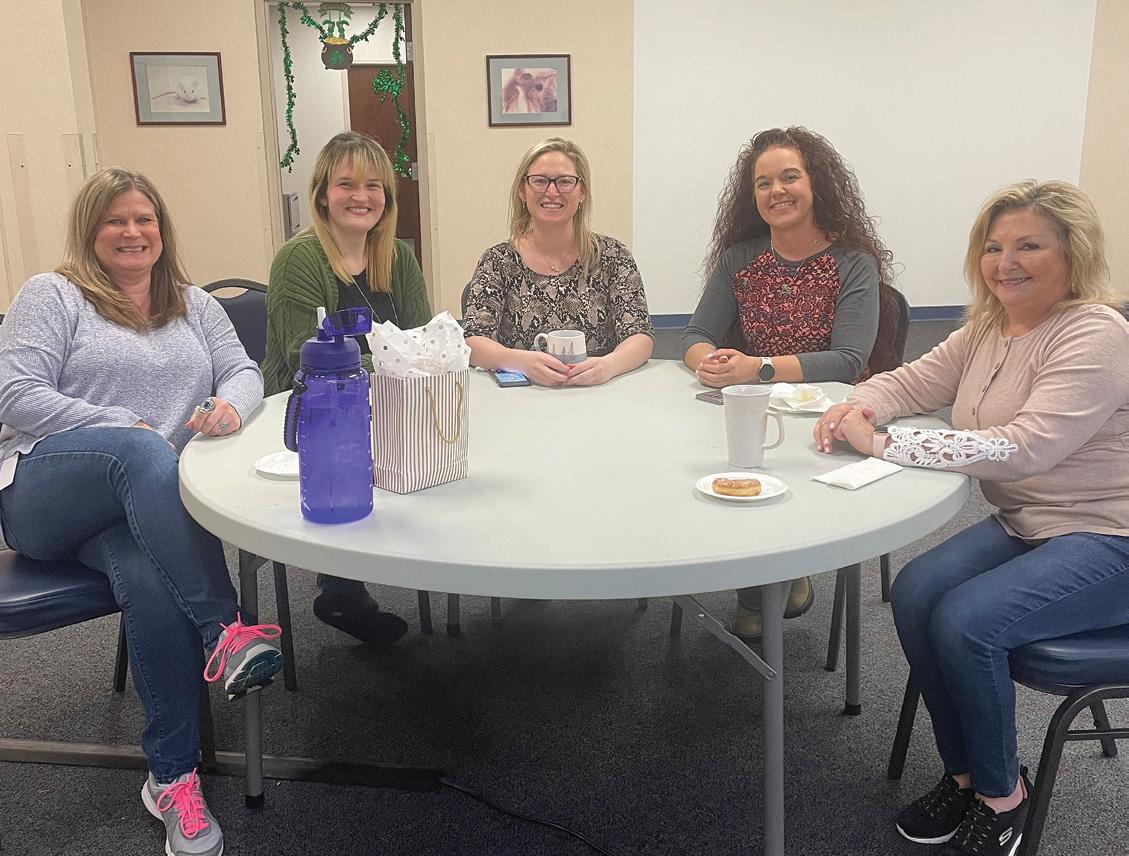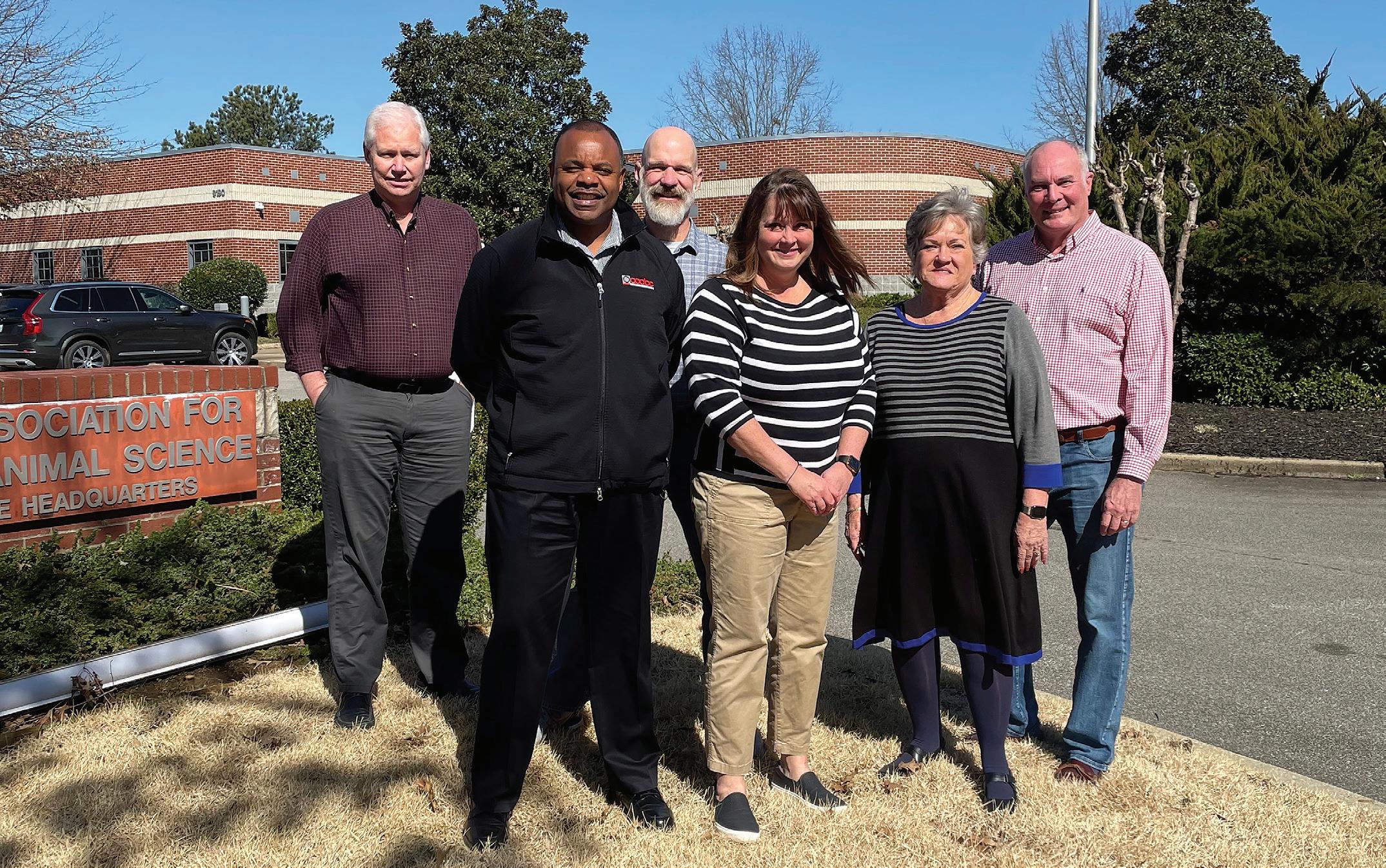
8 minute read
Career & Training
by aalasoffice
Mass General Hospital, Center for Comparative Medicine’s Be Better Program: A Systemic Approach to Building an Anti-Racist & Inclusive Culture
By Donna Matthews Jarrell, DVM, DACLAM and Ivonne Chand O’Neal, PhD
In the Preface of Joseph Jaworski’s book Synchronicity: The Inner Path of Leadership, C.G. Jung defines synchronicity as “a meaningful coincidence of two or more events, where something other than the probability of chance is involved.” Jaworski states that these coincidences occur collectively within groups and can create some of the most subtle opportunities for leadership development. Such was the case in the spring of 2020 when the whole world watched a global outcry against police brutality towards people of color, especially black men, and the overall unacceptability of racism both individually and within institutions and systems used in our everyday lives. Having years of diversity, equity, and inclusion (DEI) experience can be valuable as both the parent company of Mass General Brigham (MGB) and Mass General Hospital (MGH) responded by launching a United Against
Racism campaign announcing a commitment to become an anti-racist organization. George Floyd’s murder brought to light the undeniable evidence that power structures in our government, institutions, and companies are heavily biased against the natural well-being of people of color in the United States and beyond.
We launched the MGB United Against Racism initiative with a clear statement from the MGB President on MGB’s values associated with DEI and the commitment to addressing the organization’s failures in this area head-on. The MGH President and the MGH Senior Vice President of Research promoted this priority. While these organizations’ public statements were impressive and the commitment of executive leadership obvious, knowing how to approach such a daunting task was a “synchronicity moment.”
The Center for Comparative Medicine (CCM) at MGH is recognized as a “lean organization” dedicated to continuous improvement and innovative solutions.2,4 Organizational management principles applied in lean organizations3 support a culture where observed problems are always brought to the surface so that they can be investigated for root causes using evidence obtained by all stakeholders attached to the problem or system. Applying this same approach used to solve operational challenges, leadership in any organization can create their own public statement committing to fighting racism.
The CCM Be Better Program has been in place for more than 20 months with three primary objectives. These include the following: understanding where our policies, procedures, and behavioral expectations negatively impact BIPOC (Black, Indigenous, People of Color) members of our CCM community,
CCM “Be Better Program” : Year 1
Broadcast MGH Message from P. Slavin & T. Ferris
George Floyd Murdered CCM LT + TLs Participate in 2nd DE&I Training –
Understanding Systemic Racism MGH Lunch & Learn Webinar –
Presentation on
Be Better ProgramCCM Director’s
Statement
Issued CCM Corrective Action - Deep Dive Be Better Task Force Launched Be Better Task Force Mtg #2 Partnered with
MGB Talent
Mgmt
Be Better
Initiatives
TBA
5/25 6/4 6/10 6/11 6/24 7/8 7/14 7/21 8/10 8/12 8/20 8/25 9/15 10/1 10/12 10/31 12/15
MGRI Leadership
Presentation & Discussion CCM LT + TLs
Participate DE&I
Training on Racial
Injustice Partnered with MGH HR Be Better Program DE&I Office
MGRI/SVP Debrief
Figure 1: CCM Be Program Timeline of Events
CCM LT +TLs participate in unconscious bias training CCM Focus Group Discussions Start
CCM Focus Group Discussions End
addressing them so that our organizational culture demonstrates through actions what is meant to be an anti-racist culture that embraces diversity and inclusion, and realizing the positive impact on our BIPOC members of full employee engagement where all employees feel safe, respected, and fulfilled.
Like the MGB and MGH approach to this problem, CCM started by having candid conversations amongst the predominately white leadership team members about race and the additional life challenges of being a person of color in society. Emmanuel Acho, a Nigerian American former NFL player, developed a video on candid conversations with a black man, a well-received catalyst to developing different perspectives. Two additional monthly DEI trainings did a deep dive into issues of privilege, systemic racism, and implicit or unconscious bias. Dr. Ashley Shelby Rossette, Fuqua School of Business, states that leadership team members gained leadership skills required to lead change, including the following: a complete understanding of the complexity of different racial groups, the importance of demonstrating empathy, and the ability to see different perspectives, the power of allyship, and the reality that anti-racism is about more than the death of George Floyd. All pieces of training were highly interactive, and leadership team members and team leaders were strongly encouraged to participate in these training events. (Figure 1)
During the early sessions, the discomfort was palpable and expected. Additional analysis of our demographic data revealed several disparities in recruitment and hiring, career advancement and promotions, work assignment and special project assignments, and performance management through corrective action. Once we observed these conditions, we performed a deep dive into the causes of these conditions with the assistance of a special Be Better Task Force. The team comprised leadership team volunteers who completed the initial leadership team training. Over the next 12 months, this Task Force accumulated the necessary background information, including internal (MGB Talent Management Survey), external culture (MIT Report on CCM Agility), and staff engagement evaluations (Gallup Q12 Employee Engagement Survey). The Task Force analyzed all the applicable information and presented recommendations on what would be most important to start. They first recommended that an avenue for staff to report discrimination or racial concerns safely should be provided. Second, they recommended that CCM conduct an assessment-based, group-driven, interactive DEI training for all CCM staff. CCM Leadership enthusiastically received this news and prioritized resources to address and pursue both recommendations.
Thus, this next year, the Be Better Program will include two training opportunities for all CCM employees. These will also focus on having candid conversations about racism, discrimination, inequities, and associated topics and identifying how implicit bias and systemic racism are present in our everyday lives and how to address and eliminate them when identified.
CCM partnered with MGB and MGH diversity programs to engage with BIPOC high school and college programs to help grow a diverse pipeline of laboratory animal professionals and focused on BIPOC recruitment and hiring for all open positions. Additional career paths for frontline staff were created recognizing the on-the-job knowledge obtained through our continuous improvement culture, inclusion of mentoring and flourishing conversations as the first step of performance management, before corrective action, and the incorporation of DEI topics in regular huddles, meetings, and conversations. Overall, DEI themes have been central to more than 200 formal conversations within CCM gatherings, sharing diverse perspectives and offering growth and enlightenment to those involved, whether through sharing or active listening.
When it comes to assessing the impact of DEI initiatives, the systematic creation of a sustainable and inclusive workplace culture benefits from mixed research methods. CCM can develop targeted programs and training using qualitative methods to understand team members' experiences, preconceptions, and implicit

Figure 2: Model illustrating relationship between employee and organizational constructs, targeted DEI training and measurable shifts to achieve a sustainable, inclusive workplace culture. biases. Both before and after training is delivered, quantitative research methods can track measurable shifts in attitudes and behaviors. We can then follow these shifts against benchmarks designed to capture nuanced changes in outcomes. Figure 2 demonstrates the relationship between employee and organizational themes, DEI training, and achieving the goal of a sustainable, inclusive culture.
The CCM Be Better Program is an excellent example of the commitment, efforts, and expected outcomes resulting from an effective, robust DEI program. Key concepts to underscore as organizations consider building an anti-racist culture include:
1. It must come through systems and organizational structures such as MGB, MGH, and CCM, in our case. 2. Organizations must require that DEI conversations be a part of everyday conversations and provide a safe or brave space for people to be more supported as they can be uncomfortable.
Past approaches focused on individual behavior usually associated with legal consequences will not establish the buy-in necessary for a sustained cultural change. 3. Organizations must include opportunities for leadership in the DEI initiative at all staffing levels to encourage buy-in and create sustainability. Other fields have successfully used this strategy, as demonstrated in the case of creative youth development. When youth participate in building an initiative that involves them, their sense of belonging and engagement are measurably changed.1 4. Strategies and tools to address such DEI themes as implicit bias and uncomfortable conversations need to be included in training with feedback, coaching, and troubleshooting opportunities. 5. Evaluation and feedback loops need to be incorporated into each phase of DEI work to provide opportunities to adjust when necessary.
As organizations recover from more than 20 months of pandemic disruption and separation, it is time to reimagine the future of science and biomedical research. Employees want more meaningful work, more recognition for their contribution, and more work-life balance considerations. As eloquently stated by Dr. Brene Brown in her book, Gifts of Imperfection, people feel connected when seen, heard, and valued. An anti-racist environment can ensure that reality will truly exist when everyone has what they need to support their well-being. If we take care of the well-being of our staff, they will take care of the well-being of our animal patients.
Donna Matthews Jarrell, DVM, DACLAM, is the Director and Attending Veterinarian at the Massachusetts General Hospital in Charlestown, MA. Ivonne Chand O’Neal, PhD, is the Founder and Principal of MUSE Research in Silver Spring, MD.
REFERENCES: 1. Chand O’Neal, I. 2022. A walk in the sun: The awakening of human flourishing in creative youth development, p 286-300. In L. Tay &J. Pawelski (Eds). The handbook of positive psychology on the arts and humanities: theory and research. The oxford handbook of the positive humanities. Oxford University Press. 2. Jarrell, DM, Young S, Niemi, SM. 2005. Managing animal facility operations using the Toyota production system (TPS) approach. Abstract presented at the American Association for Laboratory Animal Science 56th Annual Meeting. St. Louis Missouri, November 8th. 3. Niemi, SM. 2015. Program management, p.1599-1616. In: Fox, Anderson, Otto, Pritchard-Corning, Whary, editors. Laboratory animal medicine, 3rd edition: Academic Press. 4. Niemi, SM. 2018. Is the veterinarian program director a threatened species? p.89-103. In: Notes in the category of C: reflections on laboratory animal care and use, Academic Press. RESOURCES: https://www.fuqua.duke.edu/duke-fuqua-insights/ashleigh-rosette-five-things-leaders-must-consider-effectively-address-racial








